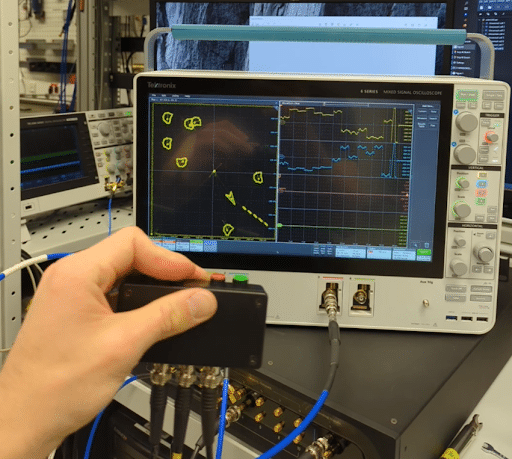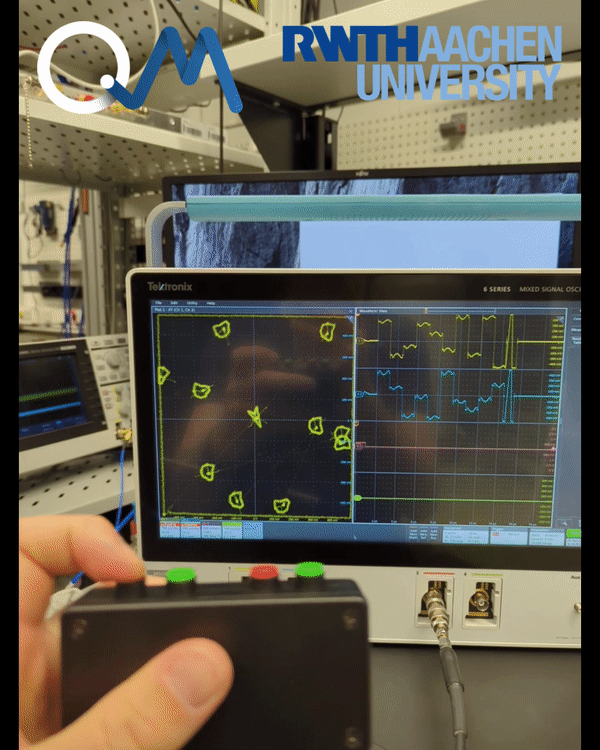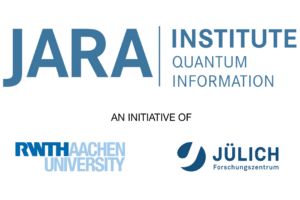From Quantum Control to Space Battles: OPX+ Powers Asteroids Game
Real-time processing, in the context of quantum control, refers to the ability to perform computations and make adjustments to a quantum system on-the-fly, on quantum coherence timescale. It involves continuously monitoring and manipulating the system’s parameters and states in response to real-time feedback. Real-time processing is crucial in quantum systems to address the delicate nature of qubits and handle errors caused by environmental noise. It enables the implementation of control strategies that ensure the stability and accuracy of quantum operations.
Buckle up, because I’m about to blow your minds with a real-time processing extravaganza that’ll have you laughing and learning all at once!
From Retro Gaming to Quantum: The OPX+ Adventure Begins
Hey there, fellow quantum enthusiasts! Get ready for a mind-boggling adventure as we delve into the mind-bending world of Quantum Machines’ OPX+. This little marvel is not just any ordinary quantum control device—it’s like a quantum superhero that can control and readout quantum devices in real-time!
But wait, there’s more! Imagine playing the good old retro game, Asteroids, but with a quantum twist! With the OPX+ and its unique Pulse Processing Unit (PPU) and the super-cool and easy Python embedded pulse-level language called QUA, we can take this game to a whole new dimension!
In fact, how do you even know that you can program your quantum controller, if you haven’t coded a game on it? So sit back, relax and let’s embark on an intergalactic journey with Quantum Machines’ OPX+. We will be combining the forces of quantum magic and gaming nostalgia in one mind-blowing experience.
Empowering Quantum Exploration: RWTH Aachen Embraces the Power of OPX+
The Quantum Technology Group at RWTH Aachen recently got their hands on the OPX+, our all-in-one quantum controller renowned for its unparalleled real-time processing abilities. Within a matter of days, the students not only familiarized themselves with QUA, Quantum Machines’ intuitive quantum pulse-level programming language, but also began experimenting with it.
Paul Surrey, a Ph.D. student at JARA IQI / RWTH Aachen, wasted no time and started exploring the capabilities of QUA. To truly grasp the power of OPX+’s real-time processing capabilities, he chose an unconventional approach—immersing himself in a video game experience. Remarkably, within a mere two days of receiving the OPX+, Paul embarked on this exciting adventure.
Picture this: Paul, an excellent student with an insatiable thirst for knowledge, stumbled upon a quantum treasure chest called QUA. Not only did his learning process hit ludicrous speed, but he also gained the superpower to effortlessly bring his most audacious ideas to life. No more banging his head against the wall with FPGA programming—Paul’s dreams were now just a pseudocode away from becoming reality!
And what did Paul do with this newfound quantum jewel? He set his sights on programming Asteroids, the ultimate retro game of galactic chaos. But here’s the kicker: Paul skipped the boring technical gibberish and went straight for the actual stuff. He simplified the task to the essentials: game logic, user input, and plotting the output. No time wasted on tedious lab setups or mind-numbing details. Thanks to the incredible OPX+, scientists like Paul can focus on the physics realm while leaving the rest to this magnificent quantum sidekick.
The QUA API allows for programming the OPX’s FPGA easily and with very little overhead within Python. – Paul Surrey
Unlocking Asteroids on OPX+
Alright, folks, let’s dive headfirst into the nitty-gritty steps of setting up Asteroids on the OPX with an oscilloscope. In order to generate 2D images, Paul utilized the I/Q output of the OPX without the need for an I/Q modulator (such as QM’s Octave). Instead, he directly connected the I/Q output to two inputs of an oscilloscope, which can then effectively display these two channels in an XY plot. It’s like creating art with quantum paintbrushes.
But hey, what about the game controls, you ask? In order to facilitate the game controls with only two input channels, Paul devised a method where he organized the four physical inputs into two groups by utilizing diodes. So, there you have it.

Paul’s setup with QM’s OPX+, a scope, and the controller.
Revealing Real-Time Processing Potential
Alright, now it’s time to witness the mind-blowing elegance of game programming with Paul’s code as our guiding light. Get ready for QUA’s Math API, the superhero of mathematical functions capable of pulling off some serious quantum magic on the OPX+. It’s like having a quantum-powered calculator on steroids. Let’s focus on the important stuff—the game functions. With QUA by our side, it’s a piece of cake. We’ve got this awesome function called assign(), and it’s the quantum equivalent of snapping your fingers and making things happen. It’s like having a remote control for asteroids. Want them to move? No problem! Just assign some new positions, and voilà, they’re dancing around the screen.
assign(asteroids_y[j],asteroids_y[j]+Math.sin2pi(asteroids_a[j])*v_asteroid*dt)Similarly, the ship’s position and velocity follow a simple set of rules. The ship’s position is updated through a translation given by the product of its speed and time, while its speed is determined by the value of the fixed variable ui_forward, which is filled with either -1 or 1 based on user input and the variable ship_acceleration, which dictates the desired rate of change in the ship’s velocity. The same applies for the rays shot by the ship
assign(ship_x, ship_x+ship_vx*dt)
assign(ship_vx, ship_vx+Math.cos2pi(ship_a)*ui_forward*ship_acceleration*dt)
assign(rays_x[i], rays_x[i]+Math.cos2pi(rays_a[i])*v_ray*dt)Lastly, collisions between rays and asteroids are determined through a straightforward distance calculation. If the calculated distance is less than the radius of the asteroid, a boolean variable is toggled, indicating a collision, and subsequently eliminating the asteroid.
with if_(distance < R_asteroid):
assign(hit, True)The process was remarkably straightforward, wasn’t it? Let the OPX+ to handle the remaining tasks, enabling you to simply tap the play button and embark on your journey.
Embrace Paul’s Journey, Unleash the Potential of OPX+, and Share Your Experience with Us
Paul, the coding maestro, accomplished the unthinkable—he whipped up an entire Asteroids game on QM’s OPX+ quantum controller in just two measly days.
But let’s not forget our other hero—the OPX+! This mind-bending contraption is like a genie in a bottle, granting Paul the power to bend quantum reality to his will. With its extraordinary flexibility, lightning-fast real-time processing, and programming made so easy, the OPX+ proved to be the ultimate wingman in Paul’s coding adventure.
So brace yourselves for more jaw-dropping, intuitive, and downright creative implementations with QM’s control platform. The quantum revolution has only just begun, and we are leading the charge together with you!
So, don’t hesitate, and send us your amazing programs right away!
We promise to follow up on the most incredible ideas here. Only one question remains: can it run Crysis?


